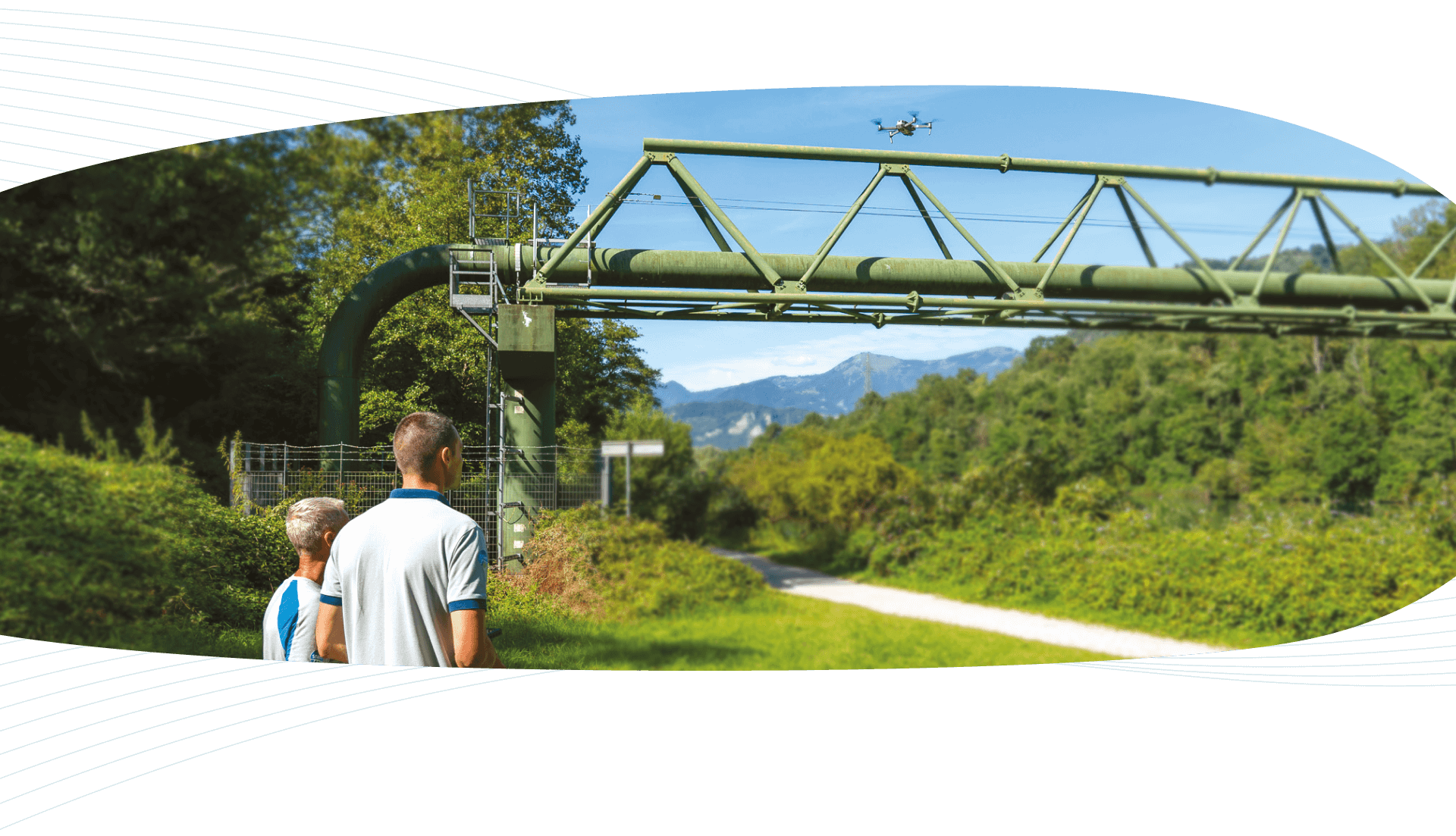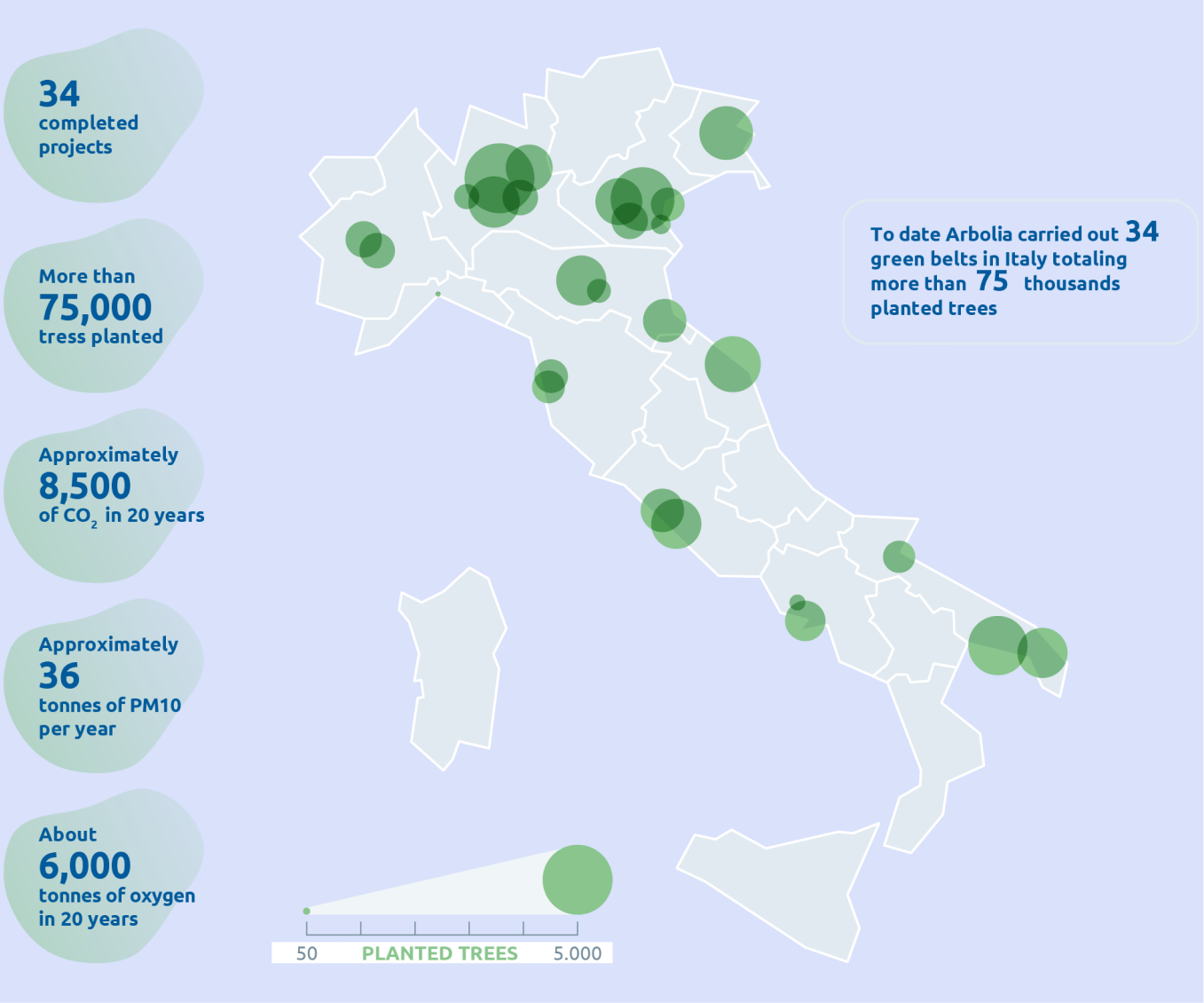Biodiversity and
regeneration
Snam has embarked on a well-defined path to establish its biodiversity strategy and to set targets aligned with the currently available guidelines of the Science Based Target for Nature (SBTN) framework.
During the year Snam was the first infrastructure-only operator to join the SBTN CEP and developed a detailed study using their methodology to evaluate its impact on biodiversity, from which two public targets arose:
- 2024: Zero Net Conversion
- 2027: Net Positive Impact
Snam already operates a Zero Net Conversion scheme, i.e., it ensures it has no impact on the ecosystem, achieving the target it initially set for 2024 in advance. It ensures that impacts in land use change are minimal, or, if such impacts are unavoidable, it ensures that natural and semi-natural areas are fully restored to their natural state.
Our objectives
Our objectives
Protecting land and biodiversity
The main environmental impacts, which may occur during the construction and decommissioning phases of the project, concern noise pollution, dust generation and release of emissions into the atmosphere, the use of water and soil resources, and possible aesthetic alterations to the landscape due to any cutting of vegetation.
To prevent negative impacts related to the operation of infrastructure, a number of good site practices have been introduced. These include wetting the tracks and reducing the speed of vehicles to reduce dust lifting, shutting down vehicles when not in use and carrying out their periodic testing and overhaul, storing waste in delimited areas and disposing of it in accordance with the terms and methods envisaged by law, and anti-hydrocarbon spillage practices.
In addition, Snam initiates mitigation measures based on the characteristics of the impacted areas and the specific plant and animal species, such as the interruption of construction site activities for the reproductive/migratory periods of some species in order to minimise the impact on fauna, the introduction of shelter or nesting support facilities, and the fauna surveillance of excavations.
If it cannot avoid crossing them, Snam takes extreme care in relation to operations in the vicinity of Natura 2000 Network Sites, the principal means by which the European Union aims to conserve biodiversity and natural habitats. Once the design phase has begun, all works are subjected to a series of stringent environmental compatibility and safety assessments to ensure maximum respect for the natural environment and the protection of biodiversity.
During the year, the construction activities of Snam Rete gas mainly involved the construction, refurbishment or downgrading of methane pipelines that required environmental monitoring and restoration:

Arbolia

Arbolia is a benefit company set up in 2020 by Snam and Fondazione Cassa Depositi e Prestiti, now wholly owned by Snam, to create new green areas in Italy, contributing to combating climate change, improving the quality of air and life in cities and the sustainable development of local areas. The company deals with urban forestation initiatives on land made available by the public administration and private individuals, including planting trees and their care and maintenance for the first few years, thanks to funding from SMEs and large companies across various sectors..
In 2023, 6 forestation projects were implemented in the following locations: Pompei, Poirino, Treviglio and Caravaggio, Alleghe, Cesena and Padua with the planting of around 16,000 forest plants in total. From its inception to the end of 2023, thanks to the financial contribution of more than 50 companies, Arbolia carried out a total of 34 urban forestation projects in 27 Italian cities, amounting to a total of more than 75,000 trees planted in over ten regions of the country. When fully mature, these forests will absorb around 8,500 tonnes of carbon dioxide (CO2) over 20 years and up to 36 tonnes of fine particulate matter (PM10) per year, returning around 6,000 tonnes of oxygen (O2) to the environment over 20 years.


neutrality
